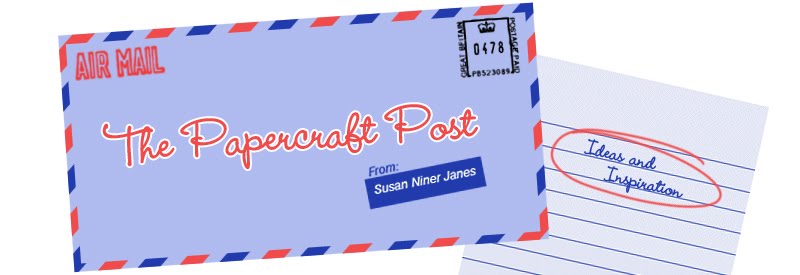 | |
Chris Anderson
Random House Business
Hardback £20.00
ISBN-13: 978-1847940650
Random House Business
Hardback £20.00
ISBN-13: 978-1847940650
This is a book about big ideas.
It is about the democratization of design in the digital age.
Just as the internet enabled the acquisition
of knowledge and communication, now digital advances are transforming product
design and manufacturing. No longer do
you have to be a professional product designer backed by industrial mega-bucks
to come up with an idea and market it. Anybody can do it. Everybody can be a
maker with access to the new making technology. Crafters – this means you
(think Etsy, think digital paper cutters). As the author points out, the
internet revolution was about computer bits – intangibles . The making
revolution is about atoms – things.
This is a business title. Don’t
be put off. It is an easy, accessible – and fascinating – read, featuring success
stories and anecdotes. In it, Chris Anderson describes both the technology and
the business strategies and practices required to get an idea to market. Like
many topical titles, this book is an outgrowth of a magazine article. The
expansion to book length works fine – there’s plenty of material to cover,
including a capsule history of manufacturing, and a review of available making
technologies.
You’ve probably seen 3-D printers
on the news. Geeks making plastic figurines (Yoda) that look like they came out of a
cereal packet. Yes, this is a technology in its infancy – very Wallace and
Gromit. (One of the main brands of 3-D printers is even called a (MakerBot ) Thing-O-Matic.)
But things are moving fast. Already 3-D printers can handle a range of materials
– plastics, stainless steel, sterling silver, glazed ceramics - at various
price points. One day, the Star Trek replicator might become reality.
Chris
Anderson likens the stage at which 3-D printing tech is at now to the dot
matrix printers of the late '80s. Things will get increasingly sophisticated –
fast. Remember desktop printing. That
was a big idea in the '90s – today everybody knows about fonts and designing
newsletters. Now it is desktop manufacturing’s
turn. The prospect of making becoming second nature is empowering.
3-D printers enable the designer
to quickly prototype an idea. If you have the digital skills, you can make it
up yourself – maybe in one of the Fab Labs (fabrication laboratories) that are
springing up worldwide. Fab labs are equipped with digital printers, laser
cutters, and other digital manufacturing gear. They are public access – maybe there
is one near you. If you don’t have the computer skills, but you do have an
idea, you can take it to a fabrication bureau, which can make up an affordable
sample, that can then be refined quickly. (Crafters may be familiar with the
Spoonflower website, which will print up original textile design fabric
metrage. Locally, there’s the Fabpad print bureau at the University of East
London, which prints both textiles and paper.)
3-D printers can be used to
fabricate human tissue – and organs – by adding stem cells onto an armature. That
surely is an astonishing achievement.
The digital design revolution is
not exclusively about 3-D printers, although they get the most publicity
because of their wow-factor. If you own a digital paper cutter (like a
Silhouette machine or a Cricut), then you have a C-N-C machine – a machine
which removes material to create the finished product (subtractive technology).
3-D printers are an additive technology – that builds up the finished product
layer-by-layer. There are also 3-D scanners which digitize info about dimension
and shape.
In addition to describing the new
digital design technologies, this title describes changes in the attitude
towards intellectual property – and how this affects the design process.
Crowd-sourcing means that design plans are freely available. In other words,
anybody can improve upon a given design without worrying about copyright or patent infringement.
Sharing and collaborating yield good design. (Cardmakers – this is like
using a sketch to spark off your design idea. Scrapbookers – this is like
scraplifting. You start off with somebody else’s idea, then build upon it. Then
you post your project in a forum for all to see.)
Another important idea is that
digital advances mean that mass production is no longer a necessity. Economical
boutique production is possible. You can make what you need or want in small
quantities. Better for the environment –
and self-expression. Chris Anderson uses the term “industrial artisan”. You
can access digital technology to make replacement parts for household items like bath plugs or shower curtain rings. Or amazing, fantastical one-off
craft creations – a steampunk sculpture, for instance. Digi manufacturing works
on both the practical and creative levels. And little guys can compete price-wise with the big fish.
This book is an illuminating
read. It describes game-changing tech and social developments which no
designer – or crafter – should ignore. My main criticism is that for a book
with such visual subject matter, a highly-illustrated format would have been helpful.
There aren’t nearly enough photos in this book. It would have been great to see
pics of the products which were described.
Chris Anderson, the author of
Makers: The New Industrial Revolution, is a writer and entrepreneur. He was the
editor-in-chief of Wired magazine, the technology title.
If you are interested in
developments in 3-D design, you might like this link:
Note: I was not supplied with a
review copy of this title. I purchased the e-book myself because I was engaged
and excited by the subject.
